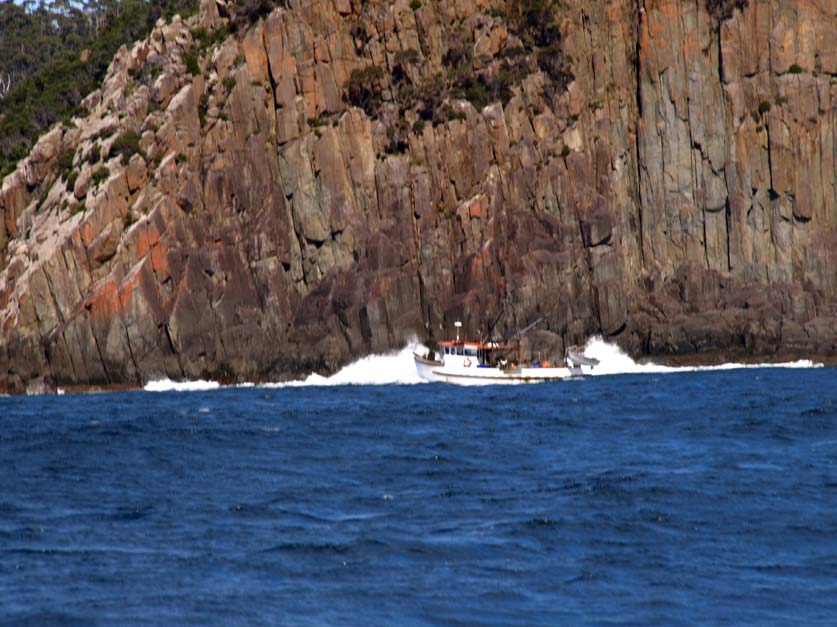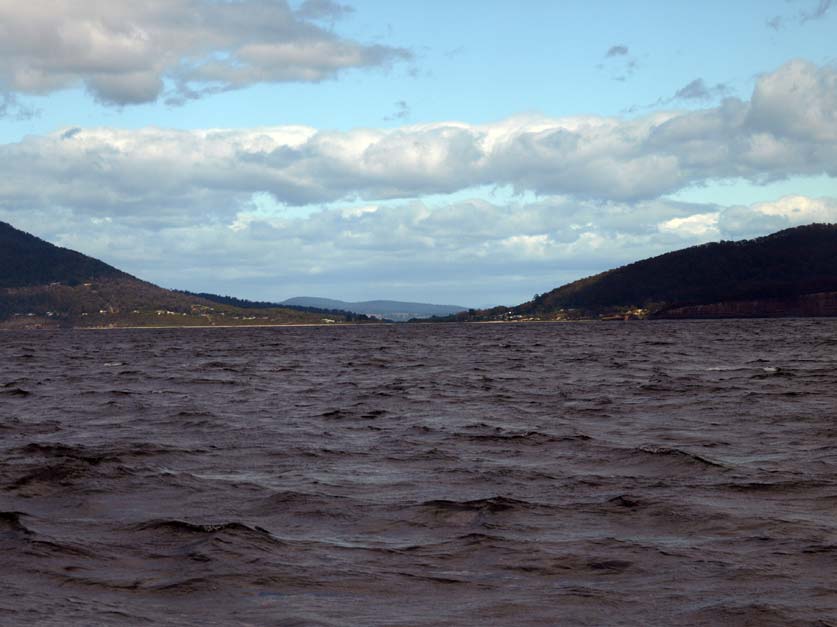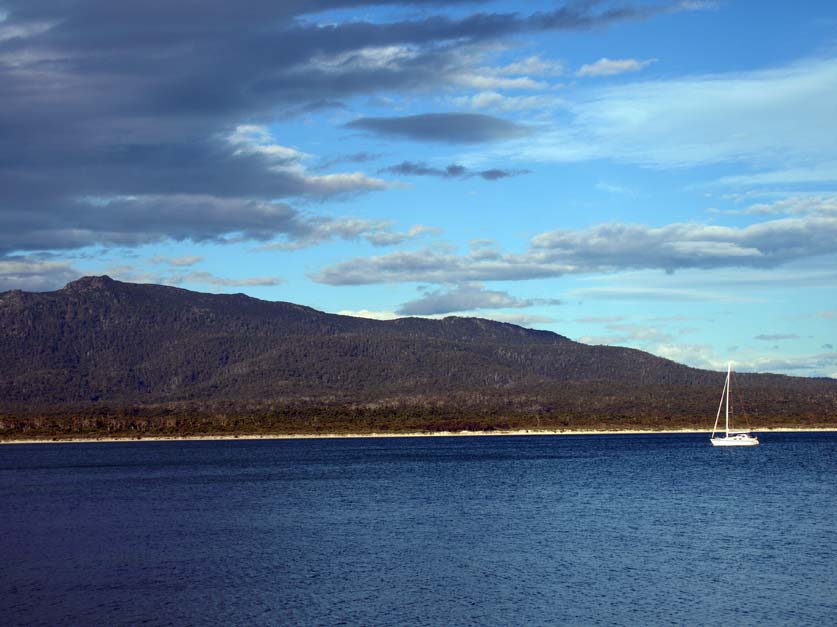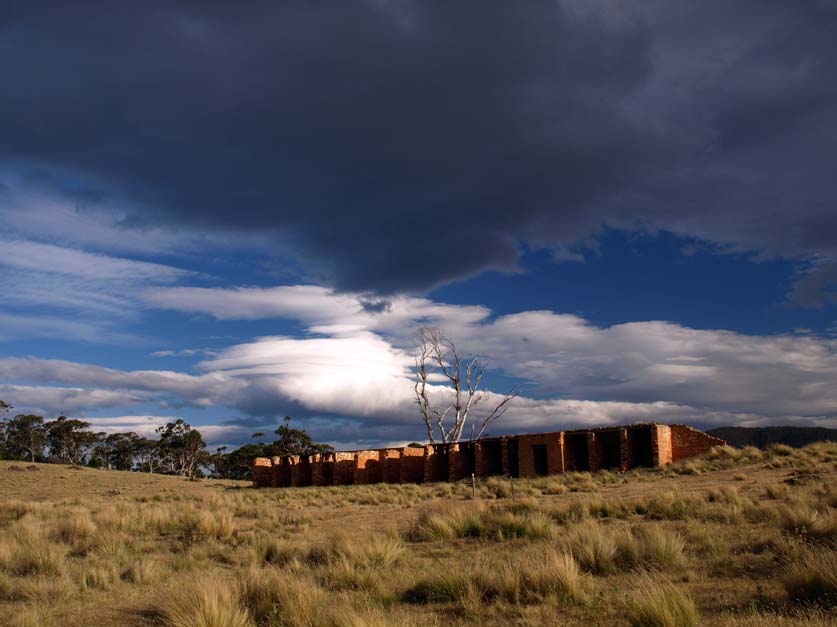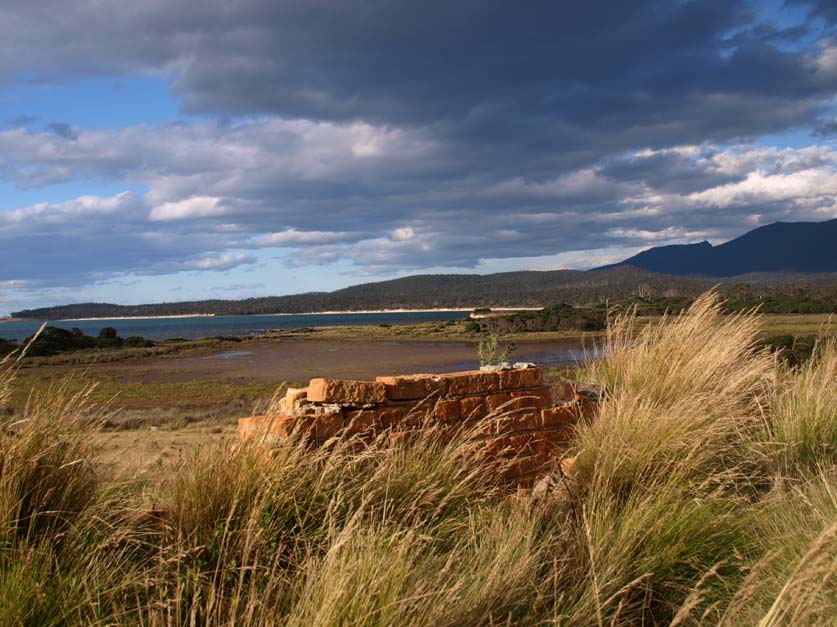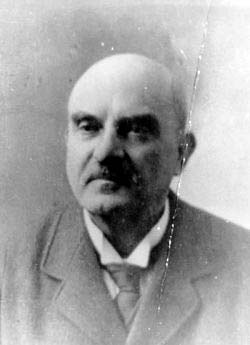Breakfast is around 7.30, muesli, yoghurt and grapefruit juice. The HF weather report crackles. Across the bay the swell is surging on the rocks. At dawn the solitary fishing boat that has been sharing our harbour weighed anchor, always a good sign when the locals put to sea. Not so good if they have all gone and you are still there. We decide to go, and after readying the boat, hanging the lee cloths and donning the overalls, we are all on deck. We motor out of Fortescue. Within a couple of hundred meters the mobile phones come into reception. Bells are ringing like the prelude to “Time” on Pink Floyd’s “Dark side of the moon” (which is playing on Escapade’s sound system). We have come into range. Had I have known that I would have taken the tender out days ago to let home know all was OK. As the bay recedes the skipper orders we make sail, and hoist the main. I am at the mast hauling on the brand new orange halyard. It works! We sail out into a two meter swell and reach up the coast. To the north of the bay the cliffs of the Tasman peninsular are still towering overhead. We pass the fishing boat off our port beam. He is setting cray pots.
Most people who eat lobster regularly get sick of them pretty quickly. I was gob smacked just before christmas to see a half cray wrapped in cling wrap on a supermarket shelf selling for $59.00.
The coast recedes away as we cross Pirates bay. At the center of the bay is Eaglehawk neck, the narrow isthmus separating the Tasman Peninsular from the main island. To secure the penal colony of Port Arthur from convict escape, shells were laid across the shore and savage dogs were tied from end to end making it impossible to get across. There is the constant reminder of a savage history lurking amidst all this beauty. I remember back to my childhood, when my father and I used to visit this coast and gaze out on an angry sea as it crashed into tourist attractions like The Blowhole and Tasman’s Arch. Back then I would never have thought that 35 years later I would be out on that very sea, the thought back then would probably have terrified me. As we head further north the wind quickens and the sea rises. As we pass Cape Frederick Hendrick, named by the Dutch navigator Abel Tasman in 1642 , Escapade creaks and groans as a series of 35 knot wind bullets hit us. In a display of great optimism we are running a tuna lure behind us, but the only thing that seems to be taking any interest in it is a solitary pacific gull. Gradually the sea state calms as we enter Mercury Passage, the strait that separates Maria Island from Tasmania, and soon we are dropping anchor in Chinaman’s Cove, a shallow crescent bay with a wide sweep of pure white sand.
We are keen to explore the Point Lesueur convict station, so a shore party is assembled. The tender is put over the side and the outboard lowered. Aimee, Robert and I motor away from Escapade towards the shore. There is a small beach fringed with casuarina trees, and an idyllic campsite inhabited by a few walkers, mountain bikers and skittish but curious rufous wallabies. We walk through a eucalyptus and casuarina forest, through clouds of butterflies, every minute or so startling a browsing wallaby that takes off into the scrub. The forest gives way to grassy rises that reveal a spectacular view of Mercury Passage. Every so often we come across neat piles of rocks. They are everywhere, and seem innocuous, blending in with the landscape, but they are the indelible remains of the pain, sweat and toil of 336 convicts who arrived here in 1842. A little further on and we come to the brick ruins of old separate apartment cells, 21 of them constructed with handmade bricks, with the remains of a timber roof covered by rubble. The cells were constructed to separate the more hardened criminals at night and during mealtimes, especially those suspected of homosexuality.
Other buildings constructed were huts for the convicts, accommodation for 11 officers, a mess a barn, a mill, church, school and hospital. They kept 2,300 sheep, farmed hay, turnips, potatoes, wheat, barley and flax. By 1847 the whole point was under crops, but with a lack of good water and poor quality buildings, the station was closed in 1850.
Maria Island enjoyed a kind of bizarre phase that sounds like something straight out of a Bertolucci movie when in 1884 the Italian silk merchant, Diego Bernacchi leased the entire island. His dream was to turn it into a Mediterranean paradise. He build a 30 room Grand Hotel and a Coffee Palace. He planted 50,000 vines and made fine wines, one of which won third prize in the 1888 Melbourne Centennial Exhibition. He planted mulberry trees to farm silkworms. Sadly the whole show went tail up in 1892. Bankrupt, the Italian dreamer moved here to Point Lesueur and joined the spirits of the convicts amid these ruins. He finally left for Melbourne and ended his days in London.
A lazy wind gusts across the barren fields, over the neat little piles of rocks as we make our way back up the hill towards Chinaman’s Cove. Curtains of rain are drawing across the passage as Robert fires up the 5 horsepower outboard and we putt back to Escapade. Dinner is a collage of whatever is left, along with some fresh flathead tails crumbed in panko. We are the lucky ones. Life is good.

